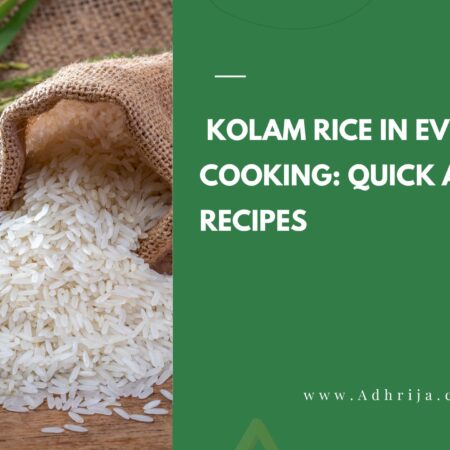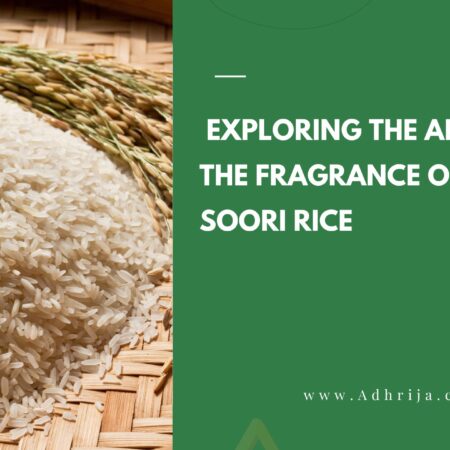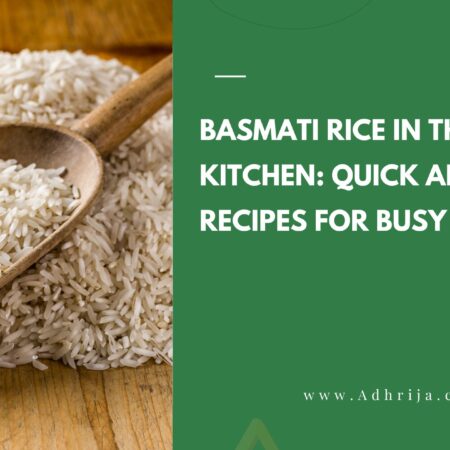
Basmati Rice as Golden Grain of India, holds a special place in the hearts and plates of millions around the world. Its rich history, unique characteristics, and health benefits make it a staple in Indian cuisine. In this article, we will explore the cultural significance of Basmati Rice, its distinct qualities, popular dishes made with this aromatic grain, and tips for cooking and storing it. Join me on this culinary journey as we celebrate the legacy of Basmati Rice in Indian cuisine.
Basmati Rice, derived from the Hindi words “bas” meaning fragrant and “mati” meaning full of aroma, is a long-grain rice variety originating from the Indian subcontinent. Known for its delicate fragrance and slender grains, Basmati Rice has been cultivated for centuries. It is predominantly grown in the northern regions of India and Pakistan, where the climate and soil conditions are ideal for its cultivation.
The History and Cultural Significance of Basmati Rice
Basmati Rice has a rich history that dates back thousands of years. It is believed to have been cultivated in the fertile lands of the Indus Valley Civilization, one of the world’s oldest urban settlements. The ancient texts of India, such as the Rigveda, mention the cultivation and consumption of rice, highlighting its importance in the daily lives of people.
In Indian culture, Basmati Rice holds a significant place during religious ceremonies, festivals, and special occasions. It is often considered a symbol of prosperity and is used as an offering to deities. The aroma of Basmati Rice wafting through the air is a common feature in Indian households, creating a sense of warmth, comfort, and togetherness.
The Unique Characteristics of Basmati Rice
What sets Basmati Rice apart from other rice varieties is its distinct aroma and elongation upon cooking. The grain is known for its delicate fragrance reminiscent of pandan leaves and a nutty flavor that enhances the taste of any dish. When cooked, Basmati Rice grains remain separate and fluffy, making it perfect for biryanis, pulao’s, and other rice-based dishes.
Another unique characteristic of Basmati Rice is its aged variety. Aged Basmati Rice undergoes a maturing process for at least one year, allowing the grains to dry naturally and develop a more intense flavor. This aging process enhances the aroma and texture of the rice, making it even more desirable.
Health Benefits of Basmati Rice
Apart from its culinary appeal, Basmati Rice offers several health benefits. It is a low-fat, low-sodium food that is cholesterol-free and gluten-free, making it suitable for individuals with dietary restrictions. Basmati Rice is also a good source of carbohydrates and provides energy to fuel the body.
Additionally, Basmati Rice has a low glycaemic index, which means it causes a slower rise in blood sugar levels compared to other rice varieties. This makes it a favourable choice for individuals with diabetes or those following a balanced diet. The presence of essential vitamins and minerals, such as thiamine, niacin, and potassium, further adds to its nutritional value.
Popular Indian Dishes Made with Basmati Rice
Basmati Rice forms the foundation of several iconic Indian dishes. One such dish is Biryani, a fragrant and aromatic rice preparation made with layers of basmati rice, meat, and a blend of spices. The slow-cooking process allows the flavors to blend perfectly, resulting in a mouthwatering dish that is loved by people across the globe.
Another popular dish is Pulao, a one-pot rice dish prepared with Basmati Rice, vegetables, and a medley of spices. Pulao was know for its simplicity and versatility, as it can customize with various ingredients like peas, carrots, and raisins, depending on personal preference.
Other dishes that showcase the versatility of Basmati Rice include Lemon Rice, Vegetable Biryani, and Saffron Rice. Each dish brings out the unique flavors and aroma of Basmati Rice, making it a delightful experience for the senses.
Tips for Cooking Basmati Rice Perfectly
Cooking Basmati Rice to perfection requires a few key techniques. First, it is essential to rinse the rice thoroughly under cold water to remove any excess starch. This step helps in achieving separate and fluffy grains upon cooking.
Next, the rice should be soak for at least 30 minutes to an hour before cooking. This soaking process allows the grains to absorb water evenly, resulting in even cooking and better texture.
When it comes to cooking Basmati Rice, the ratio of water to rice plays a crucial role. For every cup of Basmati Rice, use 1.5 cups of water. Bring the water to a boil, add the rice, and reduce the heat to low. Cover the pot and let it simmer for about 15-20 minutes until the rice is cook and the water is absorb. Fluff the rice with a fork before serving.
How to Store Basmati Rice for Maximum Freshness
To preserve the freshness and flavor of Basmati Rice, proper storage is essential. Store Basmati Rice in an airtight container in a cool, dry place away from direct sunlight. Avoid storing it in the refrigerator, as the moisture can affect the texture and aroma of the rice.
If you have purchased a large quantity of Basmati Rice, consider transferring a portion of it to a smaller container for everyday use. This prevents frequent exposure to air and helps maintain the quality of the rice.
Sustainable Farming Practices for Basmati Rice Cultivation
Sustainable farming practices are crucial for the long-term cultivation of Basmati Rice. Farmers in India and Pakistan are increasingly adopting organic farming methods, minimizing the use of chemical fertilizers and pesticides. This ensures the production of high-quality, environmentally-friendly Basmati Rice.
Furthermore, water management techniques such as drip irrigation and rainwater harvesting are being implement to conserve water resources. These practices not only promote sustainability but also help maintain the unique characteristics of Basmati Rice.
Conclusion: Celebrating the Legacy of Basmati Rice in Indian Cuisine
Basmati Rice, with its rich history, unique characteristics, and health benefits, has become an integral part of Indian cuisine. Its delicate fragrance, nutty flavor, and fluffy texture make it a versatile ingredient in a variety of dishes. From Biryani to Pulao, Basmati Rice adds an unparalleled taste and aroma to every meal.
As we celebrate the legacy of Basmati Rice as Golden Grain , let us also appreciate the efforts of the farmers who cultivate this golden grain using sustainable practices. With each plate of Basmati Rice, we pay homage to the culinary traditions and cultural heritage of India. So next time you savor the aroma of a delicious Basmati Rice dish, remember the journey it has taken to reach your plate, and relish every grain of this golden delight.







